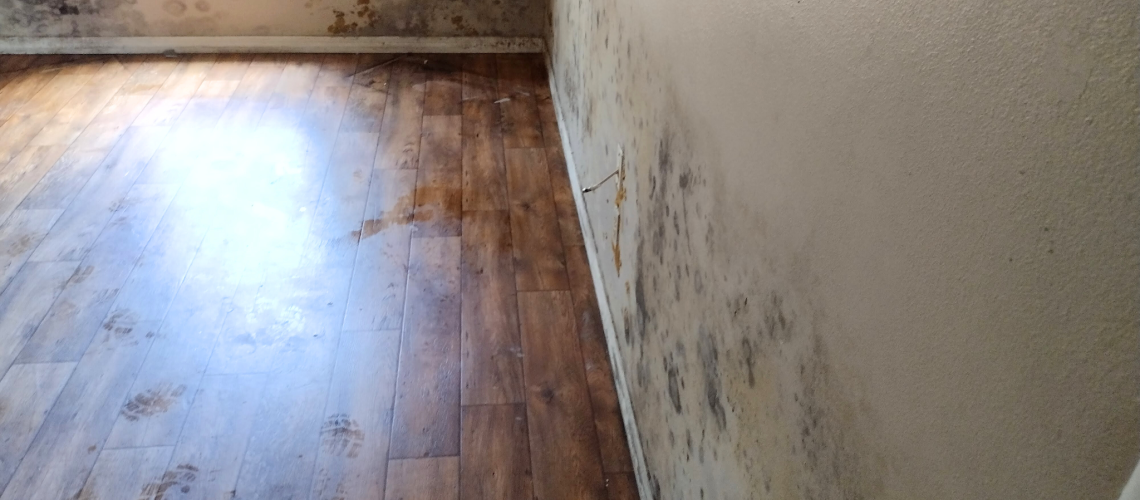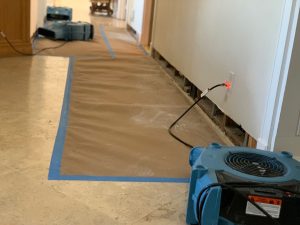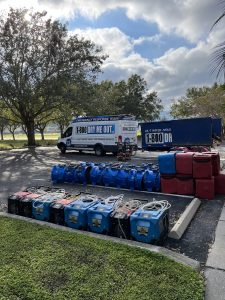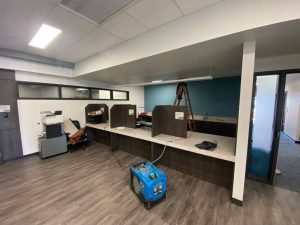Key Takeaways
- DIY mold removal can expose you to harmful spores and serious health risks.
- Incomplete cleanup often leads to mold regrowth and hidden damage.
- Using the wrong tools or chemicals can worsen the problem or spread the growth to unaffected areas.
- Disturbing mold without proper containment may contaminate your entire home.
- Professional mold remediation ensures safety, thorough removal, and long-term prevention.
Mold is sneaky. It starts small—maybe just a faint discoloration on the wall or a musty odor that lingers in a damp room. But when left untreated or handled improperly, it can turn into a much bigger problem than most homeowners expect.
At Dry Me Out, we’ve seen firsthand what can happen when people try to handle mold on their own. While the idea of saving money and taking care of it yourself may sound tempting, DIY mold removal can go wrong fast, and in a lot of different ways. In this article, we’re breaking down the real risks of doing it yourself, and why calling in mold remediation professionals is always the safest bet.
The Appeal of DIY Mold Removal
We get it. There’s a sense of pride in taking care of home problems yourself. Plus, there are hundreds of blogs, YouTube videos, and social media posts promising easy, “natural” mold removal methods using common household items like vinegar or baking soda.
But mold isn’t just a surface-level nuisance. It’s a living organism that spreads quickly, releases harmful spores into the air, and hides behind walls, under flooring, and inside HVAC systems. That’s why the mold removal process is about more than just wiping it away.
Let’s take a closer look at what can go wrong when homeowners attempt mold cleanup on their own.
1. Health Risks from Mold Exposure
One of the biggest dangers of DIY mold removal is exposure to mold spores. Mold can release millions of microscopic spores into the air, especially when disturbed.
Common Health Issues from Mold Exposure:
- Coughing and sneezing
- Itchy or watery eyes
- Skin irritation
- Wheezing or difficulty breathing
- Sinus infections
- Worsening asthma or other respiratory conditions
For people with mold allergies, compromised immune systems, or chronic illnesses, mold exposure can lead to serious complications. And even for healthy individuals, breathing in high concentrations of mold spores can trigger inflammation and ongoing symptoms.
Without protective equipment like commercial-grade respirators, full-body suits, and sealed containment zones, DIYers are putting their health at risk.
2. Using the Wrong Cleaning Products
Many homeowners attempt to remove mold with bleach, vinegar, or hydrogen peroxide. But here’s the truth: most household cleaners aren’t effective against mold, especially when it has penetrated porous materials like drywall, insulation, or wood.
In fact, bleach is one of the most common products we see misused. While it might kill some mold on non-porous surfaces like tile or glass, it often fails to penetrate deep enough to reach mold roots in porous materials. Worse yet, bleach can actually feed mold in some situations due to its high water content, leading to more growth instead of less.
Mold removal requires specialized antimicrobial solutions and tools that are designed to fully eliminate spores, prevent regrowth, and neutralize mycotoxins—not just surface-level cleanup.
3. Failing to Identify the Source
Mold is a symptom, not the root of the problem.
It often shows up because of an underlying moisture issue, like a hidden leak, poor ventilation, or past water damage that was never fully dried. Scrubbing away visible mold doesn’t do any good if you don’t fix the reason it’s growing in the first place.
Common Moisture Sources Homeowners Miss:
- Roof leaks
- Leaky plumbing behind walls
- Poor attic ventilation
- Foundation cracks or crawlspace humidity
- Past flooding or water intrusion
Professionals use tools like infrared cameras and moisture meters to locate hidden water sources. Without this step, mold is guaranteed to come back and may even spread deeper into your home.
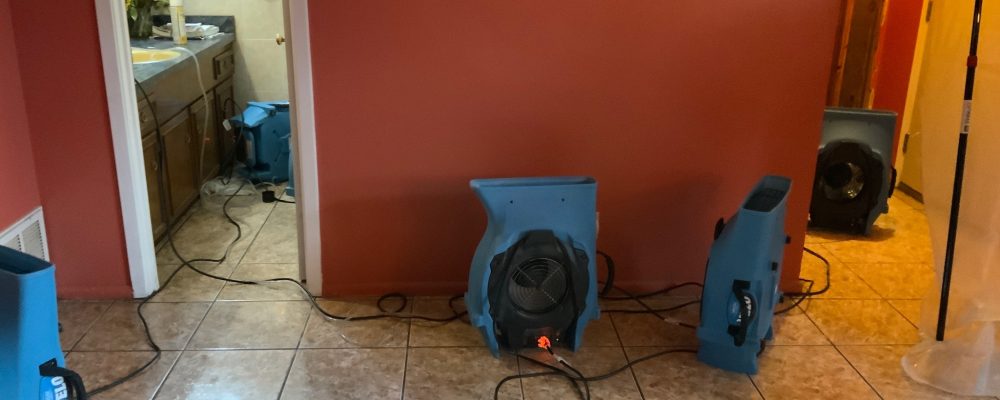
4. Making the Problem Worse
Ironically, trying to clean up mold without the right approach often ends up making things worse. Here’s how:
- Cross-contamination: When mold is disturbed without containment, spores become airborne and can settle in other parts of the house, creating new colonies.
- Damage to materials: Scrubbing or tearing out moldy materials the wrong way can release more spores, damage healthy building materials, and require costlier repairs later.
- Incomplete removal: Mold can regrow from even a small cluster of lingering spores. What looks “clean” to the eye may still be teeming with microscopic growth beneath the surface.
Containment barriers, HEPA air scrubbers, and negative air pressure machines are essential for safe mold remediation, but DIYers rarely have access to or training in how to use them.
5. Legal and Insurance Issues
Depending on where you live, mold remediation may be regulated by local or state guidelines. In Florida, for example, licensed mold remediation companies must follow specific protocols for documentation, containment, and post-remediation clearance.
If you attempt mold removal yourself and it’s later discovered that:
- The mold wasn’t properly cleaned
- It spread or reappeared
- Someone became sick as a result
…you could be on the hook for legal or insurance consequences.
In many cases, insurance companies require professional mold remediation to validate claims. Attempting DIY mold removal could void your coverage or limit your payout.
6. Missed Opportunities for Prevention
Mold professionals don’t just remove what’s visible. At Dry Me Out, our team looks at the entire indoor environment, including humidity levels, airflow, insulation, and water damage history. We’re trained to identify future risk factors and recommend steps to prevent the mold from coming back.
This might include:
- Installing dehumidifiers in high-moisture areas
- Improving ventilation in bathrooms or kitchens
- Sealing foundation cracks or crawlspaces
- Replacing water-damaged materials
- Recommending indoor air quality improvements
DIY cleanup rarely addresses these long-term fixes, which is why mold often reappears within weeks or months after self-removal.
7. Wasting Time and Money
Most homeowners turn to DIY mold removal to save money, but it often has the opposite effect.
Without the right knowledge or tools, the job takes longer, is less effective, and typically has to be redone. That means spending more on cleaning supplies, buying equipment you may not use again, and eventually calling in a pro anyway when the problem comes back.
In the long run, investing in professional mold remediation services saves time, stress, and costly mistakes. At Dry Me Out, we offer accurate assessments, transparent pricing, and lasting results backed by our expert guarantee.
Don’t Risk It—Let the Experts Handle Mold
Mold doesn’t just ruin walls or trigger allergies. It can compromise your health, damage your property, and decrease your home’s value. DIY methods might seem like a shortcut, but in many cases, they’re a fast track to bigger problems.
At Dry Me Out, we’re here to take the guesswork (and the danger!) out of mold removal. Our certified mold remediation team uses the latest technology and proven techniques to eliminate mold safely, completely, and efficiently.
Ready for Peace of Mind?
Don’t take chances with your health or home. If you suspect a mold issue, trust the experts at Dry Me Out to get the job done right the first time. Our experienced team proudly serves Florida homeowners with friendly, professional service you can count on.
Schedule a mold remediation service today and breathe easier tomorrow.

